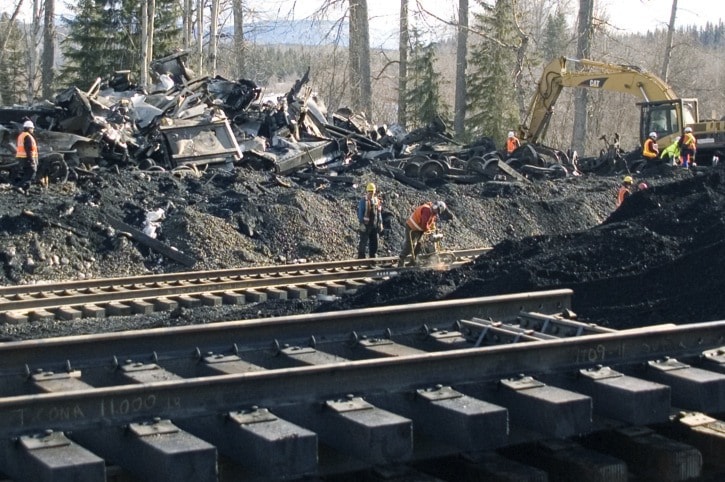Inspectors at the Transportation Safety Board say it could take up to a year before they can finish a full report into what caused 46 cars on a CN coal train to derail near Houston on Feb. 21.
"In this case, we don't have anything that's standing out to us immediately," said inspector Peter Hickli, who been working at the derailment site about 25 km west of Houston. "We're going to have to go through all the different aspects—mechanical, rail, operational."
But a full report into the Feb. 21 derailment may not be needed.
Hickli said the TSB is already investigating two recent derailments in Vanderhoof that appear to have the same cause.
If it turns out that the Houston and Vanderhoof crashes are linked, Hickli said the board will combine them into a single report.
The coal train that derailed Feb. 21 was heading west to Prince Rupert along a 125-mile stretch of the CN railway known as the Telkwa sub. In the past five years, the Telkwa sub has seen two other derailments—both of them minor incidents that involved just one rail car each.
Hickli said he has already sent some rail taken from the crash scene to be analyzed at a metallurgical lab in Prince George. Engineers in such labs can look at bits of bent rail or broken trail wheels and find out if the equipment had any defects before the derailment happened.
A "black box" recorder on board the coal train will also be studied to get data on the train's speed, direction and braking before the crash.
One other factor to consider in the investigation will be two small rail bridges that span Dockrill and Emmerson creeks. The bridges stand at either end of the area where the train derailed.
